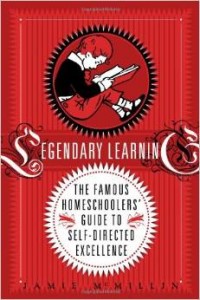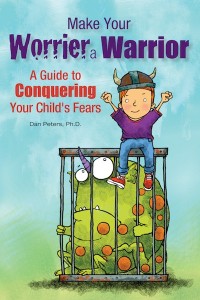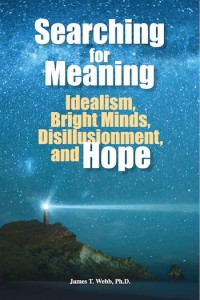Legendary Learning: The Famous Homeschoolers’ Guide to Self-Directed Excellence
Jamie McMillin
Rivers and Years Publishing, 2012
Great summer reading for homeschooling parents!
Last August, I attended the first ever (that I know about!) online homeschooling conference through The Learning Revolution Project. One of the talks I attended was by homeschooler and author Jamie McMillin, who had researched the lives of famous homeschoolers. I requested a copy of her book and recently unearthed it on my desk. Oh yeah, I said I’d review that book. Ah, the life of an overly busy writer/mother/homeschooler.
 I am glad, however, that I finally got around to reading this wonderful book. McMillin shows fine writing skills, impressive research, and insightful analysis of how we homeschoolers can learn by example.
I am glad, however, that I finally got around to reading this wonderful book. McMillin shows fine writing skills, impressive research, and insightful analysis of how we homeschoolers can learn by example.
One of the first questions she addresses is one very important to me: why does she choose “famous” homeschoolers rather than people who exhibited other kinds of success? Her justification is probably the best one could offer: we don’t know much about other homeschoolers. McMillin’s homeschoolers—Pearl Buck, Louis Armstrong, Thomas Edison, Frederick Douglass, Andrew Carnegie…—were the subjects of multiple biographies and left detailed paper trails for us to consider. So although she does focus on famous people rather than on the decidedly more real tapestry of people who simply led successful and productive lives, she does a great job framing how she chose her subjects and what she believes we can learn from them.
The book is arranged thematically, with chapters addressing various aspects of life and learning illuminated by examples of famous homeschoolers. McMillin also intersperses small glimpses of her own homeschooling life, a welcome connection to the modern world without making the book too personal. She then offers her own analysis of what successful homeschoolers do well, and how it translates both to day-to-day homeschooling decisions as well as the future success of the homeschooled child.
The subjects McMillin addresses range widely, with colorful and evocative chapter titles to introduce them: That Divine Spark, Wild Intelligence, Go Ahead—Be a Rebel, Passion into Possibility, Attitude is Everything, Clear Grit. For each subject, McMillin first analyzes the concept and how it played out in at least one famous homeschooler’s life. Then she considers how the principles analyzed could relate to homeschooling and offers us real-life examples. She ends each chapter with a bullet list of “take-aways” from the preceding discussion.
I’m not at the point in my homeschooling life where I am looking for nuts & bolts advice, though I am guessing readers in that stage will find this book useful in many ways. What I really love about the book, however, is how it shows that although the modern homeschooling movement is relatively new, and the methods we are employing can sometimes seem radical and lacking in foundation, really our quest is not a new one. McMillin’s famous homeschoolers all achieved success not because they followed the rules that most modern Americans take for granted—stay in school, follow the rules, get good grades, be a high achiever. They achieved success because they followed their passions, didn’t listen to naysayers, were diligent, and knew that they had something to offer the world.
As McMillin’s book makes very clear, that sounds a lot like the contemporary homeschooling movement. And after I read this book, I felt all the more equipped to advocate for our unusual educational choice.
 This post is part of the Hoagies’ Gifted Blog Hop—click here to read other great blogs about summer reading.
This post is part of the Hoagies’ Gifted Blog Hop—click here to read other great blogs about summer reading.
This month, we focus on Summer Reading. Summer gives many of us extra opportunities for reading… the fiction we love but don’t usually have time for, the non-fiction that we wish we had time to study during the year, or the boundless free time to read on the beach, at the cabin, or on the boat… or in your own living room. Don’t miss the special reading (and Lego!) nook, or the struggle some kids have with reading. Summer Reading is more than just a school reading list.




 Greene, who is a clinical professor of psychiatry, starts with a simple thesis that many families with sensitive, twice-exceptional, ADHD, learning disabled, or emotionally volatile children figure out over time: the usual parenting strategies don’t work with these kids. Many of us have taken a journey in this regard. We start out looking for help from standard parenting manuals, friends with typical kids, or even professionals. They have great ideas, but for some reason our kids are different.
Greene, who is a clinical professor of psychiatry, starts with a simple thesis that many families with sensitive, twice-exceptional, ADHD, learning disabled, or emotionally volatile children figure out over time: the usual parenting strategies don’t work with these kids. Many of us have taken a journey in this regard. We start out looking for help from standard parenting manuals, friends with typical kids, or even professionals. They have great ideas, but for some reason our kids are different.

